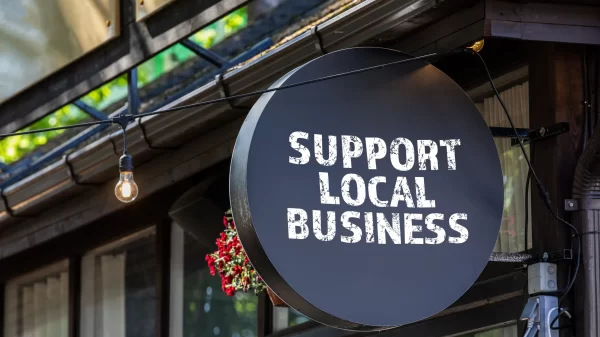NFIB’s Small Business Optimism Index decreased 0.8 points in March to 90.1, marking the 15th consecutive month below the 49-year average of 98. Twenty-four percent of owners reported inflation as their single most important business problem, down four points from last month. Small business owners expecting better business conditions over the next six months remain at a net negative 47 percent.
“Small business owners are cynical about future economic conditions,” said NFIB Chief Economist Bill Dunkelberg. “Hiring plans fell to their lowest level since May 2020, but strong consumer spending has kept Main Street alive and supported strong labor demand.”
Key findings include:
- Forty-three percent of owners reported job openings that were hard to fill, down four points from February and remaining historically very high.
- The net percent of owners raising average selling prices decreased one point to a net 37 percent seasonally adjusted.
- The net percent of owners who expect real sales to be higher deteriorated six points from February to a net negative 15 percent.
As reported in NFIB’s monthly jobs report, a seasonally adjusted net 15 percent of owners are planning to create new jobs in the next three months. Twenty-six percent of owners reported few qualified applicants for their open positions and 27 percent reported none. Eleven percent of owners cited labor costs as their top business problem and 23 percent said that labor quality was their top business problem. Labor quality remains in second place behind inflation by one point as the top business problem.
Fifty-seven percent of owners reported capital outlays in the next six months, down three points from February. Of those making expenditures, 40 percent reported spending on new equipment, 23 percent acquired vehicles, and 11 percent spent money for new fixtures and furniture. Fifteen percent improved or expanded facilities and 6 percent acquired new buildings or land for expansion. Twenty percent of owners are planning capital outlays in the next few months, down one point from February. Overall, the small business sector shows little strength from capital spending.
A net negative 6 percent of all owners (seasonally adjusted) reported higher nominal sales in the past three months. Sales are trending down. The net percent of owners expecting higher real sales volumes deteriorated six points to a net negative 15 percent.
The net percent of owners reporting inventory increases was unchanged at a net negative 1 percent. Not seasonally adjusted, thirteen percent reported increases in stocks and 17 percent reported reductions. Nineteen percent of owners reported that supply chain disruptions still have a significant impact on their business. Another 31 percent reported a moderate impact and 35 reported a mild impact.
A net 1 percent of owners viewed current inventory stocks as “too low” in March, up five points from February. By industry, shortages are reported most frequently in transportation (18 percent), retail (17 percent), manufacturing (16 percent), and wholesale (16 percent). Complaints of shortages in construction (3 percent) have been reduced because home sales have slowed due to higher interest rates. A net negative 4 percent of owners plan inventory investment in the coming months, up three points from February.
The net percent of owners raising average selling prices decreased one point from February to a net 37 percent seasonally adjusted, the lowest since April 2021. Unadjusted, 11 percent reported lower average selling prices and 50 percent reported higher average prices. Price hikes were the most frequent in wholesale (71 percent higher, 16 percent lower), retail (61 percent higher, 8 percent lower), construction (57 percent higher, 8 percent lower), and finance (56 percent higher, 8 percent lower). Seasonally adjusted, a net 26 percent plan price hikes, up one point.
Seasonally adjusted, a net 42 percent reported raising compensation, down six points from February. A net 22 percent plan to raise compensation in the next three months.
The frequency of positive profit trends was a net negative 18 percent, five points better than in February. Among owners reporting lower profits, 31 percent blamed weaker sales, 23 percent blamed the rise in the cost of materials, 13 percent cited the usual seasonal change, 9 percent cited lower prices, 8 percent cited labor costs, and 3 percent cited higher taxes or regulatory costs. For owners reporting higher profits, 48 percent credited sales volumes, 21 percent cited higher prices, 18 percent cited usual seasonal change, and 5 percent cited lower labor costs.
Two percent of owners reported that all their borrowing needs were not satisfied. Twenty-nine percent reported all credit needs were met and 59 percent said they were not interested in a loan. A net 9 percent reported their last loan was harder to get than in previous attempts, up four points.
Three percent reported that financing was their top business problem. A net 26 percent of owners reported paying a higher rate on their most recent loan, up two points. Rates are rising, but credit is still available.
















































